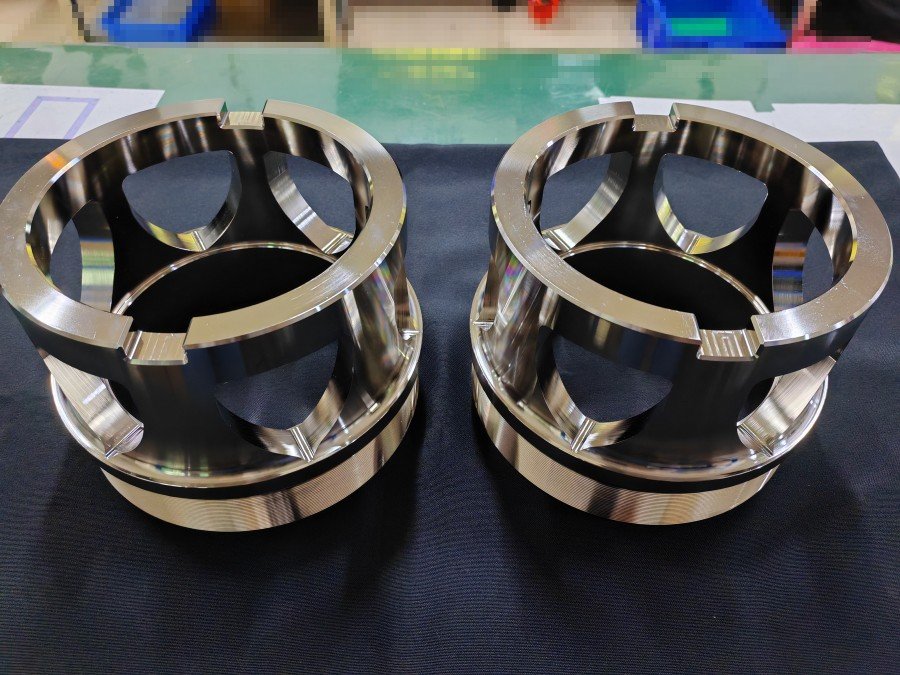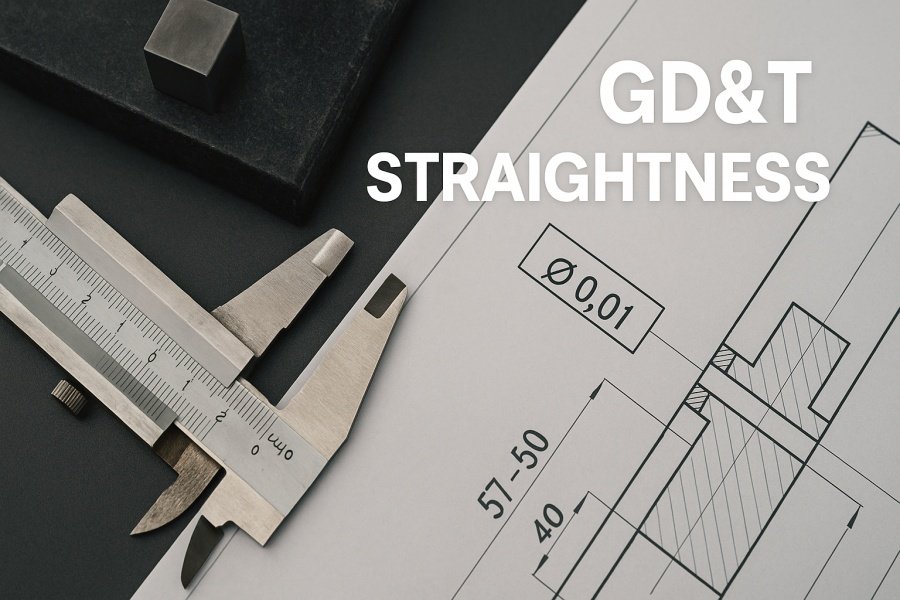Why Geometric Tolerance Straightness Defines CNC Precision
In modern CNC machining, precision is more than just a number on a blueprint — it’s the foundation of reliability, interchangeability, and product performance. Among all tolerance factors, geometric tolerance straightness plays a critical role in determining how accurately a part’s form and function align with its design intent.
Even the most advanced machines can only perform as precisely as their tolerances allow. Straightness, one of the most fundamental GD&T (Geometric Dimensioning and Tolerancing) symbols, controls how much a surface or axis can deviate from a theoretically perfect line. When this deviation is not managed properly, it can lead to assembly misalignment, vibration, and reduced component lifespan.

What “Straightness” Really Means in GD&T
In GD&T terminology, straightness specifies how much a feature — either a line on a surface or an axis — can deviate from being perfectly straight. It ensures that shafts, rods, and flat surfaces maintain uniformity throughout their length.
There are two primary types of straightness control:
- Surface Straightness – Limits deviation along a line on a surface, ensuring the surface is flat and smooth enough for proper sealing or fit.
- Axis Straightness – Controls how much the centerline of a cylindrical part can deviate from a perfect axis.
To illustrate, imagine a CNC-turned shaft that looks cylindrical but actually bows slightly by 0.02 mm. In high-speed rotation, that deviation can cause noise, unbalanced motion, or premature wear. For precision assemblies like medical devices or robotic actuators, maintaining sub-micron straightness tolerance is essential for consistent performance.
Using a GD&T Calculator for Design Verification
A GD&T calculator helps designers and quality engineers verify the dimensional integrity of parts before they reach the machine floor. By converting GD&T symbols into numerical data, it enables accurate simulation of how tolerances interact in complex assemblies.
For example, a drawing may specify “Straightness ≤ 0.01 mm per 100 mm length.” The GD&T calculator helps confirm whether this value maintains compatibility with other controls such as flatness, parallelism, and concentricity. This step ensures that downstream machining operations don’t create unintentional tolerance stacking — a common cause of rejected parts.
But while digital tools can validate design intent, only accurate measurement on the shop floor can prove that a part meets these specifications.
Measuring True Position Without a CMM
A Coordinate Measuring Machine (CMM) is the gold standard for verifying part geometry, but not every facility has access to one. Fortunately, true position and straightness can still be measured with practical methods on the shop floor.
Some effective alternatives include:
- Dial Indicator and Surface Plate: A simple setup that allows machinists to measure straightness along a surface or shaft by comparing readings at various points.
- Laser Alignment Systems: Ideal for long parts or tight spaces where physical contact is impractical.
- Optical Measurement Tools: Great for small components, providing visual verification of alignment and deviation.
- In-Process CNC Probing: Many modern CNC machines feature probes that measure deviation during machining, automatically compensating for tool wear or heat expansion.
These techniques provide cost-effective ways to maintain control over geometric tolerance straightness without needing full metrology equipment.

The Material Factor: How Machinability Influences Straightness
Straightness tolerance doesn’t exist in isolation — it depends heavily on material properties and how they react under machining forces and heat. Different materials respond differently to cutting stress, thermal expansion, and residual tension.
Common examples include:
- Aluminum Oxide Ceramics (machining aluminum oxide): Extremely hard and brittle. Even minor tool pressure or heat can cause micro-cracks or surface distortion. Tight geometric control is vital for aerospace or semiconductor components.
- Brass and Bronze: Easy to machine but prone to internal stress, especially when cooled unevenly, leading to minor warping.
- Stainless Steel: Tends to work-harden. Without proper feed and cooling, it can distort during turning or milling, affecting straightness.
Achieving true precision requires not only controlling geometry but also understanding the underlying material science that governs dimensional stability.
Precision CNC Techniques to Maintain Straightness
To meet demanding geometric tolerance straightness requirements, advanced CNC operations rely on multiple process control techniques and intelligent compensation methods. These may include:
- Thermal Stabilization: Controlling temperature at every stage — from coolant flow to spindle heat — to prevent thermal distortion.
- Dynamic Toolpath Adjustment: Utilizing in-process sensors and feedback systems to correct for minor deviations in real time.
- Vibration Damping and Rigid Fixturing: Ensuring components remain stable during machining, especially for thin-walled or long parts.
- High-Precision Grinding and Superfinishing: Final refinement stages that achieve straightness accuracy beyond standard CNC milling or turning.
The result is a process that ensures every machined surface maintains both geometric integrity and long-term stability.
CNC Machining Castings: Managing Tolerance from Raw Form to Finish
Castings pose one of the greatest challenges in precision machining due to their inherent variability. Porosity, surface irregularities, and internal stress can make holding a tight tolerance especially difficult.
To maintain geometric and straightness tolerances during machining of cast parts:
- Pre-Machining Inspection identifies surface distortion and internal voids.
- Stock Allowance Adjustments ensure consistent material removal.
- Consistent Fixturing and Temperature minimize re-deformation between rough and finish cuts.
Even complex cast parts, when processed with modern CNC methods and real-time compensation, can achieve remarkable straightness — often within ±0.01 mm.
Conclusion: Why Straightness Defines CNC Excellence
In CNC manufacturing, geometric tolerance straightness isn’t just a line on a technical drawing — it’s the invisible foundation of functional precision. Every micron of deviation can affect performance, alignment, and longevity of mechanical systems.
By understanding GD&T principles, leveraging accurate measurement techniques, and applying precision process control, manufacturers can consistently achieve the straightness and accuracy that modern industries demand.
Precision is not a coincidence; it’s the result of engineering discipline. Mastering geometric tolerance straightness ensures that every component aligns perfectly with its purpose — where perfection is not optional, but engineered.
💬 Ready to discuss your CNC project?
Fill out the form below and our engineering team will get back to you within 24 hours.
